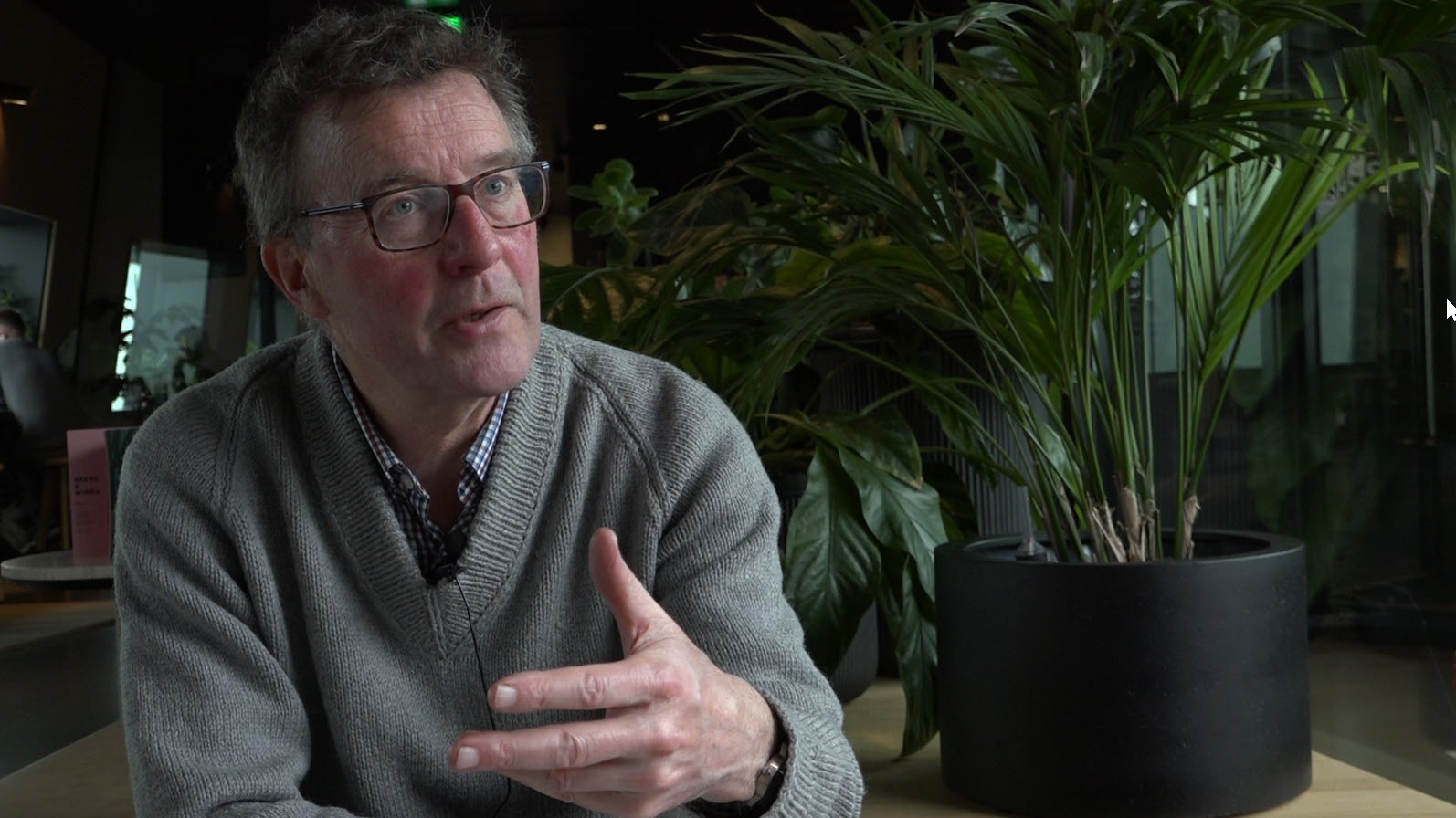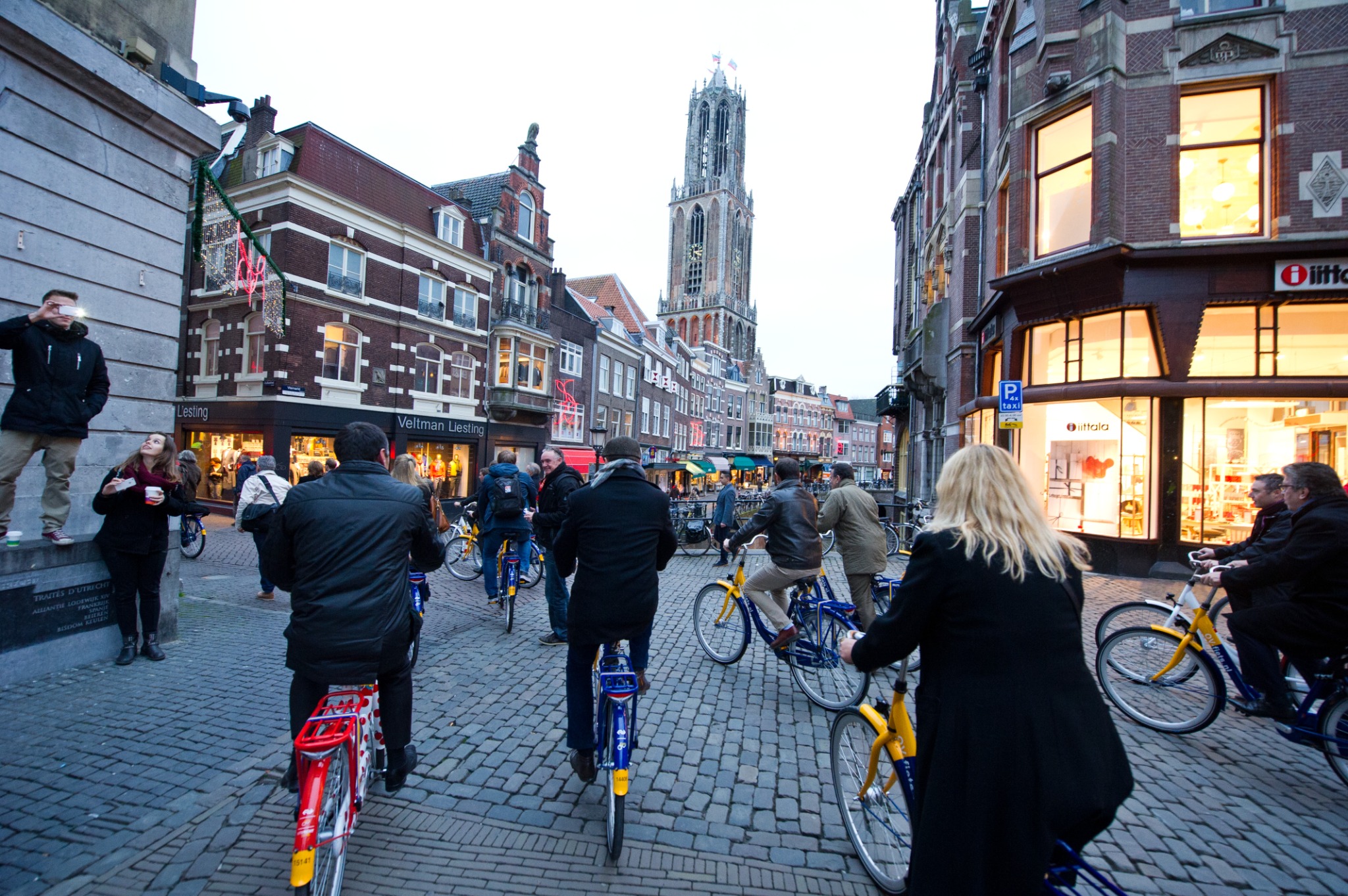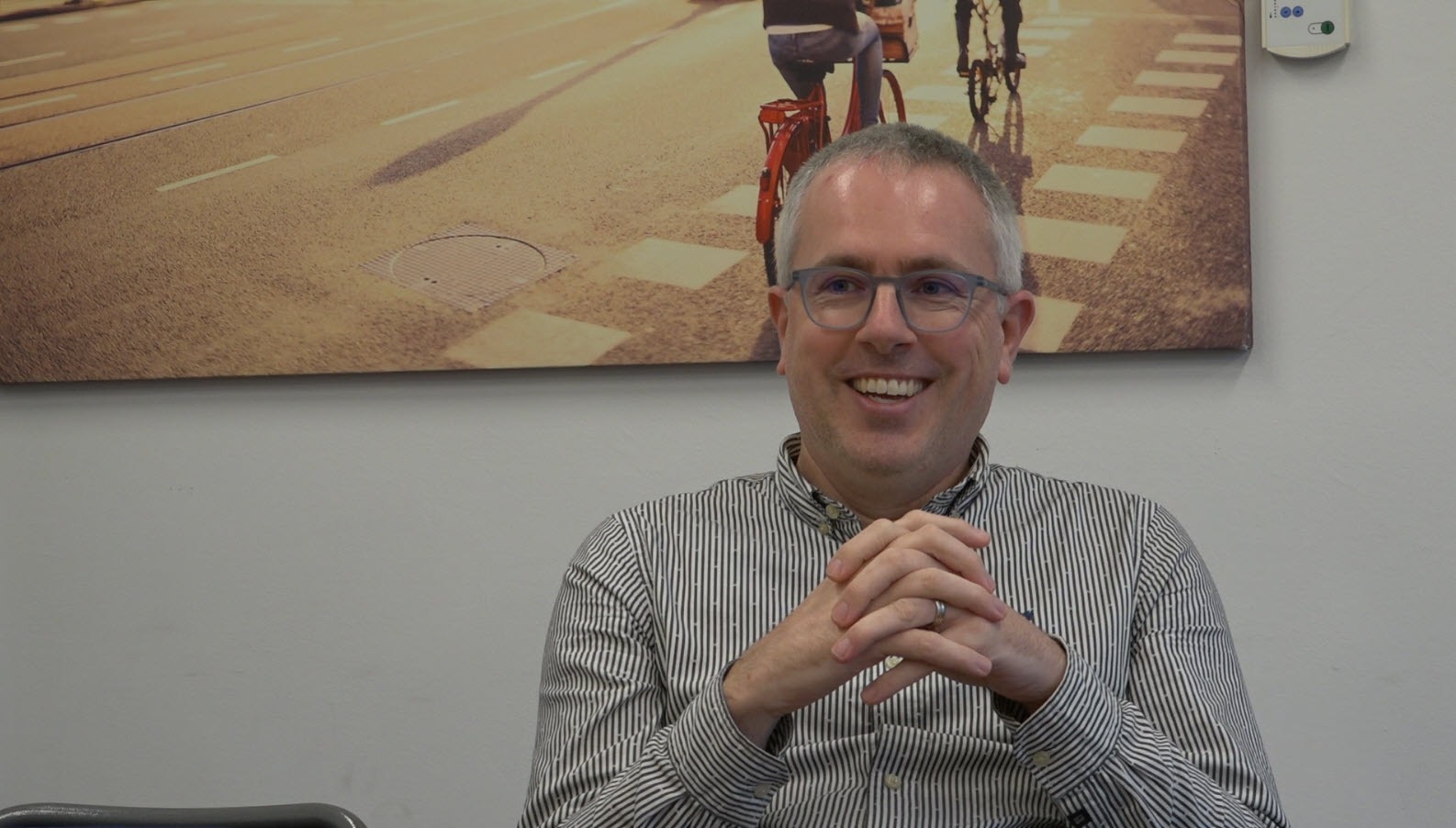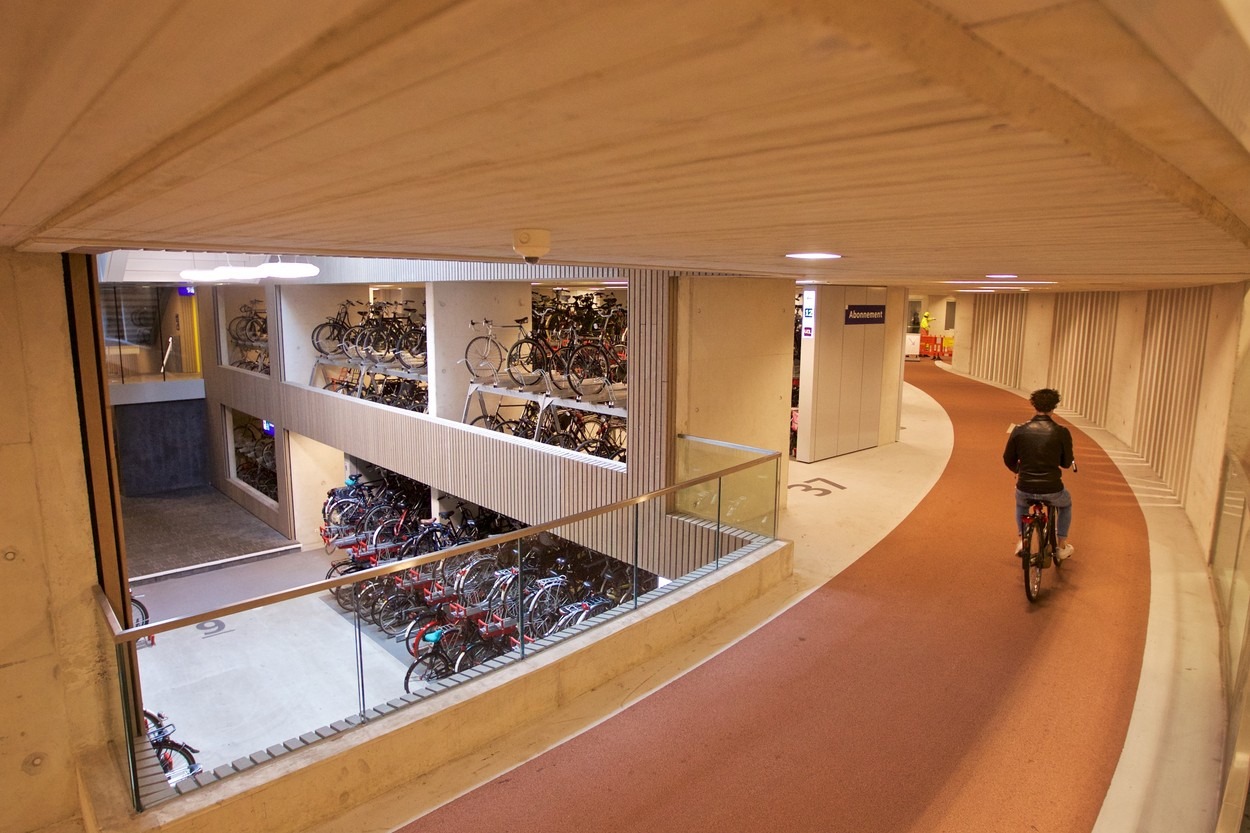"Cities full of wheeled pedestrians": The Dutch & Their Bikes
When one thinks of a nation that is cycling mad, the country they think of is the Netherlands.
Just over an hour by plane from Manchester, six-times smaller than the UK, the country is gladly ruled by the two wheels.
The bike is king over here. Most journeys are made by bike and car ownership is surprisingly low for a modernised Western country.
The Netherlands has one of the lowest car ownerships in the EU with an estimated 481 cars per every thousand inhabitants.
With such a wide-ranging and robust cycle network stretching throughout the country – city to city and coast to coast - it’s no surprise the car simply doesn’t enter into the equation.
Across its 17 million inhabitants, there are 23 million bicycles. The highest number of bikes per capita in the world.
Unlike many countries, such as the UK, the Dutch don’t see cycling as a frivolous, childish leisure activity that clogs the roads and gets in the way of the serious adult business of driving.
The stereotypical ‘Dutch bike’, called the omafiets or grandma bike, is a heavy and utilitarian thing. Most countries would describe it as a step-through women’s bike and would promptly avoid it as such.
But in the Netherlands this type of bike, with the frame curved downwards so one can literally ‘step-through’ to mount, makes most of the journeys on the 35,000km of cycle paths in the country.
Rather ironically the Dutch bikes were traditionally made in Coventry, imported at the turn of the century. Made in the UK and shipped to a country who would appreciate them more. A ringing tagline for the ailing love affair between Britain and its bike.
There is no stylistic reservation about a supposed ‘women’s bike’. The Dutch recognise any two-wheeled machine as a bicycle that can be used daily, without special clothing or even a helmet.
Over here the bicycle is not a fashion statement nor a landmark to any of your impressive cycling hobbies or achievements. And it’s certainly not a statement of interest that you get a little too aroused counting the teeth on your cassette or that you actually rather like what you see in the mirror when you heave a skin-tight sleeve of luminous lycra over your midlife crisis body.
It is a purely classless thing. A simple, free, and eco-friendly way to get around.
Many think the bike-centric approach the Dutch have towards the use of their social space came about entirely organically. Something they put in the water perhaps that gives them a natural aversion to the motor car.
This wasn’t the case as the Dutch had to fight for their bike lanes. The 1960s saw their cities, like most in the world at the time, remodelled to suit the car. Waves of asphalt poured for superhighways several lanes thick of belching tyres and symphonies of flashing indicator lights.
The pedestrians of the city reduced to small specks of white. But thousands of road deaths later – many of them children – protests sparked in an effort to banish the car into the distance.
The ‘Stop de Kindermoord’ protests started by the Feitsersbond, a nationwide action group founded in 1975 to champion cycling interests, formed the catalyst for the bike-friendly infrastructure we still see in the Netherlands today.
Coupled with the 1973 Oil Crisis, cities across the world fell silent with the absence of the car. Most countries ran back to their four-wheeled companions soon after the crisis was over. Yet the Dutch liked what they saw during this time as their city centres fell silent and quickly set about building their cities for the people and their bikes first, the car second.

The Dutch believe that the bicycle is much more than a collection of sprockets and gears. It’s a tool that can change cities and the way citizens interact with one another.
One city which has long-pioneered this method is Groningen, a vibrant, student city in the north of the country.
60% of journeys are made by bike here on an average of 1.31 times per day, compared to national average of 0.84.
Cor van der Klaauw, a member of the Feitsersbond in Groningen, believes the Dutch affinity with the bike is very much a cultural thing.
“I always say I’m a lazy person,” Klaauw said, “so I take the bike more or less right in front of the shop because my bicycle is the same as my feet.
“And when I go to the post box, I take the bike because I don’t like walking. So a lot of people in the Netherlands see the bike as a lengthening of your feet.
“There has to be a change in the mind. And our former Queen Juliana (between 1948 – 1980), there are some very nice pictures of her on the bike. And even our Prime Minister also takes the bike to his office. Our king also goes on the bike sometimes.
“So it’s also the national figures who use the bike – these things are very important.”
Groningen is a dream for cyclists. Without a car in sight, the high streets are dedicated to bikes and pedestrians only. Underneath the streets, sit vast underground parking for the bikes of the city – all free of charge with a mechanic on site to assist with any problems you may have with your bike.
At roundabouts too, the traditional enemy of the cyclist, the car always stops for the cyclist. A distinctive and visible painted lane awaits you as you go over the roundabout, whilst the car sits and waits.
It is a perfect example of ‘if you build it, they will come.’
But why is Groningen seen as a template for a bicycle city?
“Well in 2002 we were cycling town of the year and that gives us more attention on cyclists. And that was a reason for politicians to give more money to cycling facilities,” Klaauw said.
“But the planning of the town was very important and maybe the first reason why Groningen is a cycling town.”
Groningen utilises a system called a ‘compact city’ whereby all the main facilities of the town are close together. This was a conscious approach, developed since the 1970s to ensure the only viable modes of transport are walking and cycling.
Klaauw added: “Everything was compact and close together. That means you’ve got less space for cars. That means you have to improve the bicycle network.
“Groningen is a cycling city because (of) the facilities for cyclists and the environment of the ‘compact city’, so all the facilities in the town itself is between 3-5km, which is a reasonable distance for using the bike.”

But why aren’t Britain’s cities build to accommodate the bicycle?
The two countries have a similar climate, their populations sit broadly similar on many issues and Britain’s cycling heritage in the Velodrome certainly trumps that of the Netherlands.
“It’s also a cultural aspect” Klaauw added, “because when I say to my neighbours, ‘well I will go to the town centre and I think I will take the car’, and they say, ‘Cor you stupid, where will you park the car?’
“So it’s not only the infrastructure or the town planning but it’s also a cultural thing, so you have to change the behaviour of the people. But it’s difficult to find an answer to implement the Dutch system in Britain.
“Although facilities are important, not only to have a free and safe ride, but also to park your bike because if you park your bike at the (train) station it could get stolen – this is an important thing. That’s why we improved the cycling parking facilities. But secondly it has to be a change in the mind.”
In Utrecht, 30 minutes outside of the capital Amsterdam, one can find another city where the car is firmly at the back of the pecking order.
Utrecht is one of the Netherlands major cities. Home to 360,000 and the largest bicycle parking bay in the world – catering for nearly 13,000 bicycles hidden underground beneath Utrecht Centraal train station.
The Dutch Cycling Embassy, an organisation who teaches cities around the world on how best to establish ‘The Dutch Way’ for themselves, has its main office in Utrecht.
Chris Bruntlett, marketing director at the DCE, believes incorporating such a system can all depend on government will. Originally from Canada, Bruntlett confessed that he moved to the Netherlands with his wife and kids in 2019 after solely missing the Dutch approach to mobility and city planning.
It was such a shock upon arriving into Canada - with its temples of asphalt and engines - that his two kids began to cry.
He said: “Since the 1970s, (the Netherlands) have not been building a car-free society but a mobility network that works for pedestrians first and foremost, for cyclists secondarily, public transportation and last but not least the private automobile.
“They continue to invest 30 euros per person per year in cycling. So when you see the huge numbers of people cycling in the Netherlands and the bicycle traffic jams or the bike modal share, it’s because of government policy that was set in the 1970s to make it so.
“And when we’re talking to other cities around the world, we have to emphasise it’s a choice that they can make, not something they’re culturally inclined to do or was the product of circumstance. It was the product of demand from the population.
“The Dutch have a very Calvinist culture, who are not ones to show off their wealth, so the plain black bicycle here has proliferated. It’s a product of the infrastructure that you’re able to move at the speed you want to move without the threat of motor vehicles.

“Riding a bicycle in the Netherlands is just a faster form of walking - cities full of wheeled pedestrians. You’re just taking a walk with wheels and so you don’t wear special clothing or safety equipment and as a result, cycling becomes a very utilitarian thing.
“It’s something to imagine in cities outside of the Netherlands, because the infrastructure doesn’t exist and you’re always rubbing shoulders with cars, so the only ones left are the really dedicated - the fit and the brave - that don’t have that casual relationship with their bicycle.
“They’re a product of the hostile conditions in their city - so they feel the need to gear up with safety equipment and special clothes and a racing bike to keep up with the car traffic to avoid getting seriously injured.”
The fact the Netherlands is part of a very small list of countries - of which the UK is not a part - who properly incorporate the bicycle into their cities and way of life is equal parts a perplexing and annoying statement for any two-wheeled lover in the UK.
That even the daily commute can feel like a kamikaze run - dodging an assortment of objects that can all-too-easily divert such commute from the front door of your workplace to the front door of the nearest A&E department.
But back in the Netherlands, many believe Utrecht has been working the hardest on its cycling infrastructure in recent years.
Bruntlett added: “Even when you get off the train at Utrecht Centraal, you step right into the bicycle parking garage there. At 12,500 spaces it’s the largest facility in the world with four stories of bicycle parking. It’s a testament to the unique way that Dutch planners have combined the bicycle and the train as one cohesive mode of transport - almost a cathedral to sustainable mobility.

“When you leave the station and onto the Vredenburg, the street that runs through the centre of Utrecht, it is the busiest cycle path in the Netherlands and during an average day they see around 40,000 cyclists. At this point they keep widening the cycle path and now they can’t widen it enough!
“It used to be six lanes of car traffic in the 1970s and has gradually been returned.
“It’s a great example of a street that used to be dominated by cars and has since been transformed into a car-free corridor only open to buses, cyclists and pedestrians.
Bruntlett finished with what almost sounded like an invitation.
Claiming, “You can cycle anywhere in this city comfortably on a bike and there’s a nice wide red bike lane waiting for you no matter where you go.”
Watch the full film here. Shot on location in The Netherlands and UK.
Post a comment